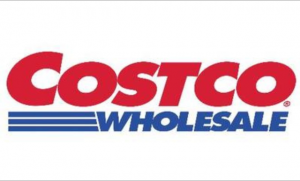
I am no scientist, but I do consider myself rational. I once even took a master’s level course on inventory and logistics. Rationality however can be an elusive phenomenon, especially when confronted with the temptations of Retail Therapy.
Years ago, I was strolling the aisles of a Ukrop’s grocery store, right next to the apartment complex I lived in, in Richmond, Virginia. Ukrop’s was a family owned chain of stores, where I made frequent errands for precisely what I needed, which in those days of blissful simplicity, could be for even as little as a single bag of chips. On this particular occasion, I was weighing my choices between a small bottle of pretty Himalayan pink salt, and next to it, a large Morton’s salt jar. Health conscious, organic me would have normally opted for the Himalayan salt, but for a minute I dithered. Pinch for pinch, I calculated the Himalayan pink salt would cost several times over the Morton salt, and there was also family due to visit soon, who couldn’t care less, among all things, for dilemmas over table salt. My economical brain thus prevailed, but just as I reached for the Morton salt, I had my first comeuppance.
‘Don’t take that’, a voice rang out, in Gujarati, as a short and stocky lady puffed up to me, grandmotherly concern writ large on her face. ‘There’s a sale going on in Costco, where you can get 5 of these same jars for a dollar. Be not taken in by the pretty lights of this store!’
I was a combination of miffed and amused. What would I do with 5 salt jars? Have salted tea? Elderly ladies can sometimes give you the most insistent, yet ridiculous advice, but you only take them on at your own peril. In this case, this was easily the most harebrained proposition I had heard in a while, or so I thought. But I decided against voicing my reaction, and told her instead that I would surely checkout Costco sometime.
Several major retail conglomerates dot the modern American economic landscape, and among them are a few who have helped shape whole new paradigms in consumer buying behavior. In the world of bulk buying, I was soon to discover, Costco is king.
Shortly after the encounter with the Gujarati lady’s advocacy, I was on a long afternoon road trip in California, while also looking for roses to bring to a dinner party later in the evening. ‘Find the nearest Costco’, a friend advised, even as I had a 4 hour drive ahead of me. ‘They stock lovely red roses, and you’ll get plenty more roses than from a local florist for the same price’. With quite a few social occasions slated over the next few months, I decided this would be the impetus for my plunge into the world of buyer’s club shopping.
At 55 dollars per annum, I knew I had to make the Costco membership pay for itself. And it didn’t disappoint. Several times in the subsequent months, I went to buy big bunches of red roses. And then one day the same friend called out of the blue to say there was a Costco deal going on with innerwear. In an impulse bout of bulk buying, I carted dozens of sparkling white vests and briefs. I had managed to find the break even, or paisa vasool as they say in India, for the cost of membership. It was in fact a truly economic order quantity, I consoled myself, except with a restocking frequency of 10 years and more. One could, hopefully, still emerge rational in the long run.
Till the day I discovered that you could do even better by sharing costs of membership, or better still, piggybacking, if your purchases were occasional, on the generosity of a friend. I have since been lucky enough to do the latter.
Just last month, I needed to get some vases and plants for my front porch. After considering several local stores, we found that Costco might have the best deals. So piggybacking on my friend’s membership, a group of us embarked on a ‘Costco Run’. Not surprisingly, we were not the only ‘buyer gangs’. One could see several gangs of software geeks trooping in along with us, ready for their slice of adventure.
Yes, the conquest of shopping can satisfy as much as the conquest of a peak, or similar such adventure sport, for the majority. Retail therapy is indeed the great American adventure of modern times, especially during the weekends, when enthusiasm understandably surges high. Conducted on terra firma, amongst fluorescent aisles in the safety of the indoors, this is a sport almost everyone can indulge in.
By the Costco entrance, one could see families wheeling in their kids in shopping carts that are wide enough to seat two kids at once. The difference, on the way out, is usually that the same kids are now precariously positioned over endless cartons and boxes, and may even have to perch atop their family SUVs on the ride back home. Outside, new tires are readily available should you want to replace your old worn out ones, especially considering the gargantuan bulk of what the typical shopping expedition ends up with.
Entering the store, one feels one has just come through the gangway of a major ocean liner that has docked at port, stacked with its trove of mercantile treasures from halfway round the world. Row upon shining row of goods can be found stacked on shelves impossibly high. You might do well to come in with your own tall ladder, should you intend exploring the upper decks of the ship.
A trained eye can easily sort out the seasoned shoppers from the novices. The novices, or ‘Costco virgins’, spend their time gaping at the promotions on display, usually in the front section of the store, or by the checkout. They are the ones who have made the brave (and grave) mistake of barging in without a shopping list. The optometry section right upfront offers help to such folks, ensnaring them with every imaginable kind of lens so they might be able to shop and impartially succumb to all deals with clear vision. As if that might not be enough, there are rumors of soon to be introduced Costco retrievers, dogs trained to help you navigate to the juiciest deals store wide, cutting through all the crowds and confusion. The catch? True to Costco spirit, you’ve got to bulk engage a dozen of them at one go. Which is as well, considering one might have a sledge of goods to check out with, having come in not knowing what to buy in the first place. The longer you linger around, the more enticing your shopping discoveries, and the bulkier you will return home.
We were of course predetermined with our shopping plans for the plants and vases, and happily, found a couple of enormous, yet beautiful blue vases from Japan. The plants and pottery section was indeed stocked with some great items for home decor. We then headed for the excellent selection of organic fruits, chips and other snack items which have now become a mainstay for the grocery business.
But if you did not quite know what to get, and came in with an ‘open list’, the treasures of the Costco universe are endless. There’s dog food to feed all the dogs in town, strays included. There are enormous sized hiking pants that can make excellent gifts for any grizzlies you might invite over to your campfire. There’s organic maple syrup that could represent the output of a large Canadian forest. Enough laundry detergent to wash all global politics clean. Batteries to power your home for the next decade, and endless arrays of diapers and toilet paper. Thankfully, if you belonged to a shared buying team, bulk scale is less of an issue, especially when settled through the wonder app, Splitwise.
One has to wonder, however, what all of this humongous retail therapy portends philosophically for happiness. In terms of sheer scale, I would not be surprised if we found out that the annual business of a single Costco store could be about the same order of magnitude as the GDP of Bhutan, the tiny modern Shangri La which prefers to measure Gross National Happiness over GDP.
In this case, we should perhaps then look for the happiness afforded from Costco shopping and see how it compares. The happiness of the Bhutanese stems from lightness of possessions and simplicity, and of course, pristine mountain air and fresh tasting jam. Americans, by contrast, can buy the equivalent of the average Bhutanese’s annual purchase, from a single visit to Costco. At least in the immediate aftermath of such a shopping expedition, their finances become modest, and a content frugality settles in. Overall happiness might thus turn out quite comparable. Especially if you owned stock in Costco, which would allow you to have your cake and eat it too.
Bhutan still beckons though, and we must explore it some day. Hopefully before the advent of Costco in Bhutan.
